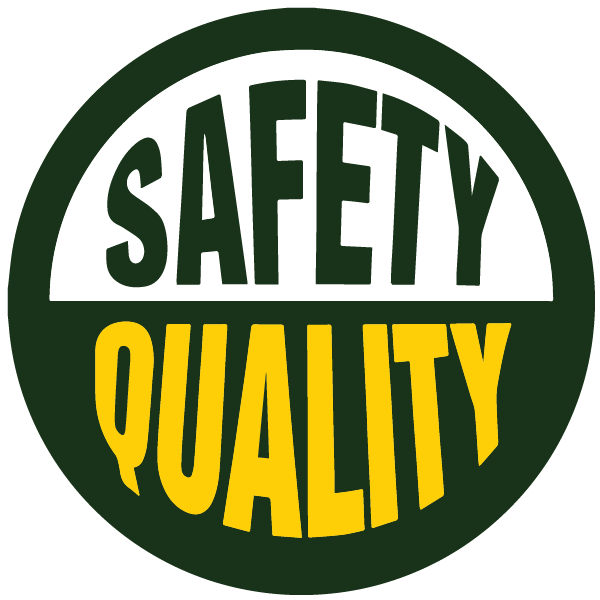GEM Engserv Pvt. Ltd is an ISO 9001:2015 certified organization, certified by TUV India in accreditation with National Accreditation Board for Certification Bodies (NABCB).
GEM Engserv Pvt. Ltd is an ISO 9001:2015 certified organization, certified by TUV India in accreditation with National Accreditation Board for Certification Bodies (NABCB).

Most organizations, including those dealing with projects, have a functional organization structure. In a functional organization, there are various verticals/departments, each supposed to be an expert in its own function. HR, Finance, Operations, Procurement, Quality and Safety etc. would be typical functions in an organization. This implies that Quality and Safety are different areas of specialization. While this is true to a great extent, these two functions are similar in many more ways than we realize. This article explores the similarity between these functions, in the context of the construction industry, and try to find if the similarities can be utilized to make both functions more effective and better aligned.
Treated as staff function: One of the first and fundamental similarity between these functions is that these are (unfortunately) treated as a ‘staff function’ and not a ‘line function’! On the other hand, strangely and unfortunately, they get blamed for problems related quality of construction and any safety related incident. Except in highly evolved organizations, the Management also holds the Quality/Safety function accountable for defects and accidents. We should realize that producing high quality construction and creating a safe work environment are primarily the responsibilities of the execution (operations) team. The Quality Manager and Safety Manager are at best an expert advisor to the Construction Manager. In most organizations, these two functions have responsibilities without authority. This leads to disillusionment and scepticism in the Quality and Safety professionals.
Generic yet highly specialised: Quality Management (QM) and Occupational Health and Safety (OHS) Management are both generic in nature. That means, the basic philosophy and principles underlying these functions apply equally to all types of organizations / businesses. At the same time, the operational aspects of Quality Management and OHS Management in each business is highly specialised. Thus, a Construction Quality Management professional will be out of place in a service industry or a manufacturing set-up. The professionals dealing with these functions therefore require not only the generic and fundamental knowledge about these functions, but they must also possess basic understanding of the business/domain to which these are applied.
Tripped by short-termism: Another issue that both Quality and OHS professionals struggle with is the short-term mindset prevailing in the business managers. Investment in improving Quality /OHS performance generally yields results in the long term. In the short term, these efforts are often considered as costs. There is therefore a struggle to justify expenditure in improving Quality and OHS at projects. No wonder then that Quality and OHS aspects suffer if there are cost overruns in a project or cost pressures on the business.
Complex and negative performance measures: The challenge highlighted in the para above is compounded by the difficulty faced in establishing objective performance measures. The measures of Quality and OHS are typically based on measuring the negatives / failures (defects and accident statistics), rather than measuring the positives. If the business manager does not get a measure of a positive impact / ‘ROI’, there is less incentive to invest time, effort and money in these aspects of business performance. Quality and OHS managers therefore try and get buy in from the line managers by relying on the vision and values of the top management.
Audits and ratings abound: Another aspect that is similar in the fields of Quality and OHS management is that ‘Audits’ play a major role in measurements and performance improvement. Audit of other aspects such as Scheduling, Billing, Human Resource Management, Contracts Administration, though not unheard of, are not as common as Quality and OHS audits. Unfortunately, audits often end up reinforcing adversarial mindset between line managers and Quality & OHS managers.
Common framework: Amongst the many frameworks that exist, ISO:9001 is a widely adopted system for implementing organization-wide Quality Management practices. Similarly, ISO:45001 (earlier popular as OHSAS) is one of the more popular frameworks for OHS management. Both these systems are very similar in nature and are based on common pillars such as Management commitment, continual improvement, involvement of people, fact-based decision making etc. Any organization that has already implemented QMS under ISO:9001 finds it relatively easier to implement OHS management under ISO:45001.
They are complimentary: One of the most powerful factors making these two systems similar and bringing them closer to each other is the cross-functional impact that they have. For example, attempts to improve the quality of product and processes would have a collateral benefit of improving the OHS performance and vice-versa. For example, improving the quality of designs, checks on design and erection of temporary structures such as formwork and scaffolding would automatically enhance the OHS aspects related to the safety and stability of the permanent and temporary structure. Similarly, if safe working conditions are created, the workmen would feel safe psychologically and focus on their work, rather than have their safety at the back of their mind. Such focused workmen are bound to commit less mistakes.
To summarize, organizations can recognize these similarities in Quality and OHS function and leverage the information in more effective and efficient utilization of their resources in managing these functions.